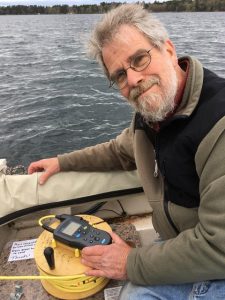We are fond of saying that the water quality in the Eau Claire chain of lakes “is listed in the top 10% of all Wisconsin waters,” but what do we base this on? We use the data collected by citizens who monitor our lakes while volunteering for the WDNR’s Citizen Lake Monitoring Network (CLMN). Volunteers measure water clarity, using the Secchi Disk method, as an indicator of water quality. They may also collect chemistry, temperature, and dissolved oxygen data, as well as watch for the appearance of aquatic invasives. For opportunities to volunteer with the WDNR’s Citizen Lake Monitoring Network, please contact Kris Larsen at 715-635-4072 or kris.larsen@wisconsin.gov.
In 2006, we collaborated with the Town of Barnes to obtain a WDNR Lake Management Planning grant for the Eau Claire Lakes. The lake management plan can be found here.
What is clear water worth? How much does it add to our property values? In 2016, researchers from UW-Eau Claire’s Department of Economics were asked to determine how improvements in water clarity could impact property values. Upper Eau Claire Lake, Middle Eau Claire Lake and Lower Eau Claire Lake were among the 20 Northern Wisconsin lakes examined. Click on the cover image to see the full study.
You can look at current and historical data on thousands of Wisconsin lakes by visiting the Wisconsin DNR’s Lake Water Quality page. Links to area lakes are to the right.
In 2011, the University of Wisconsin-Stevens Point published a collaborative report on water quality in the Upper St. Croix – Eau Claire River watershed.
| Douglas County |
| Lower Eau Claire Lake |


